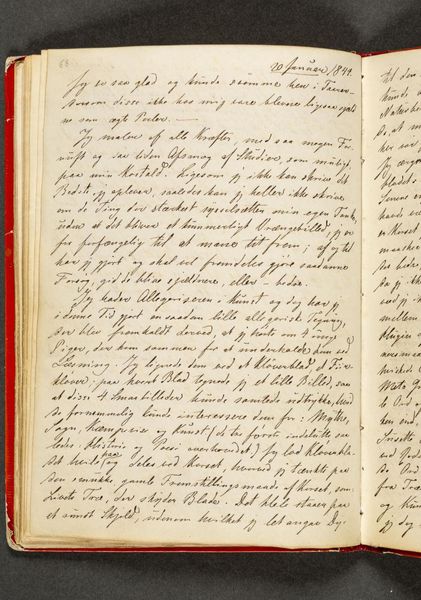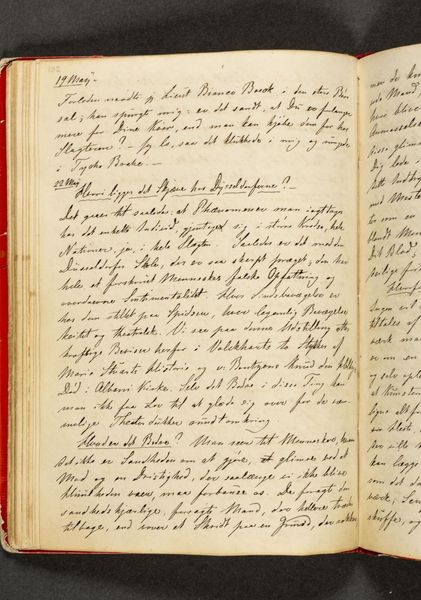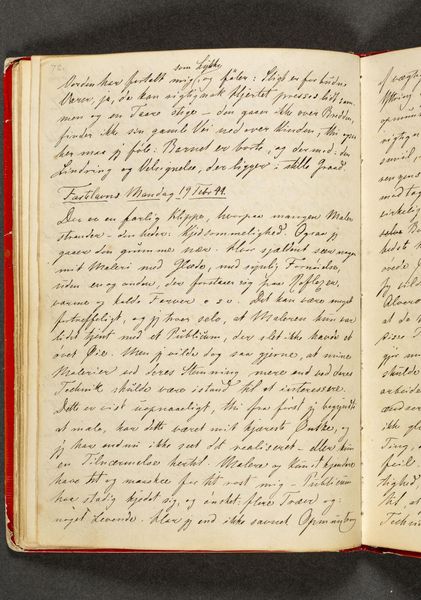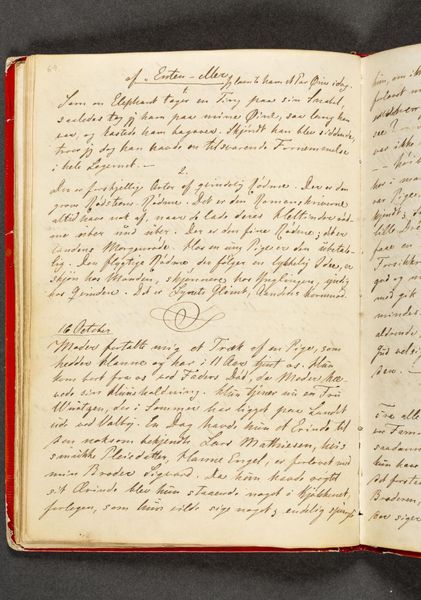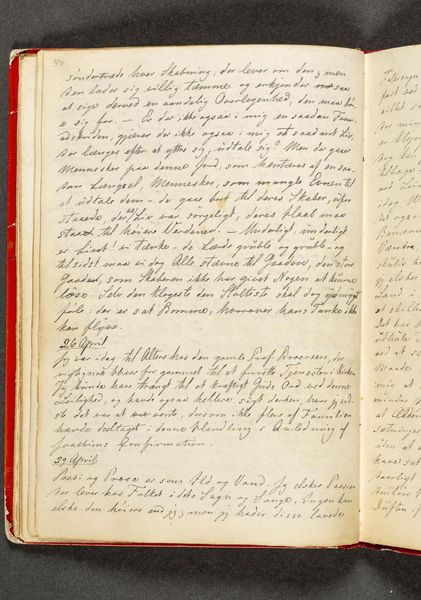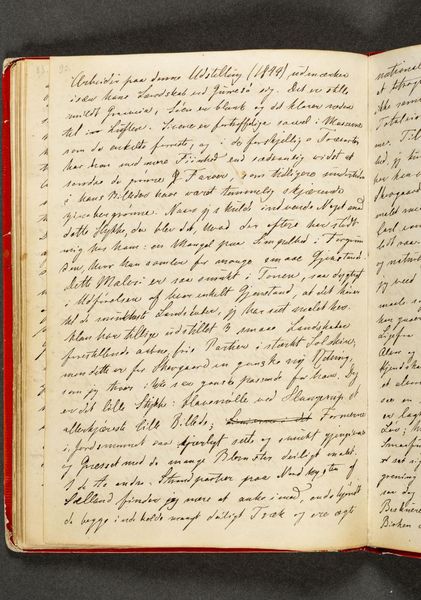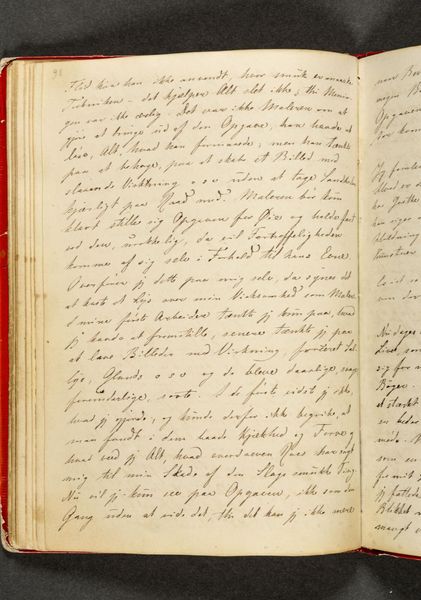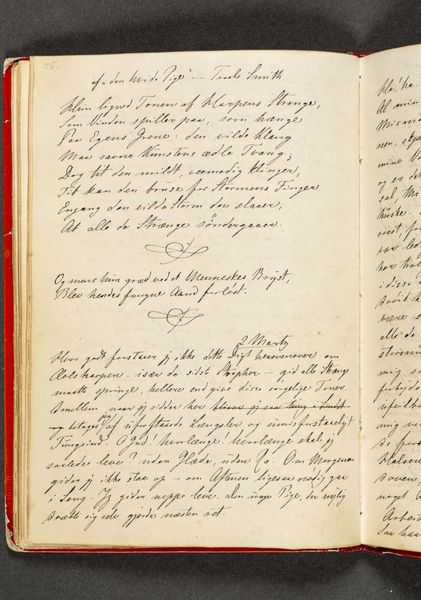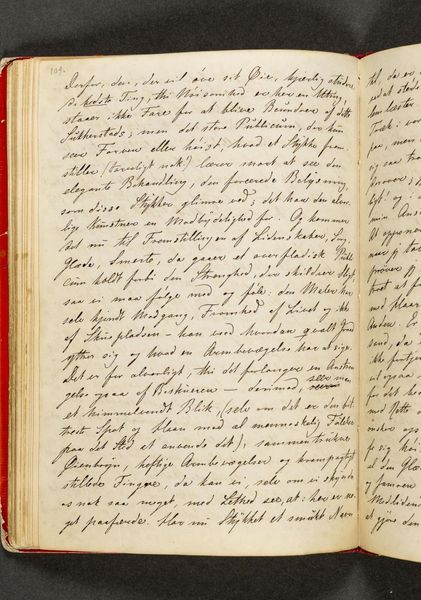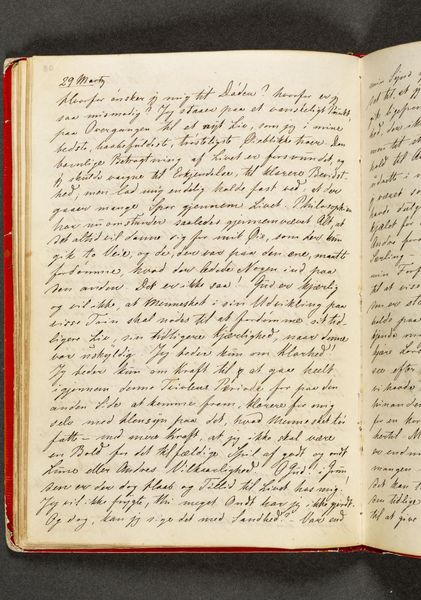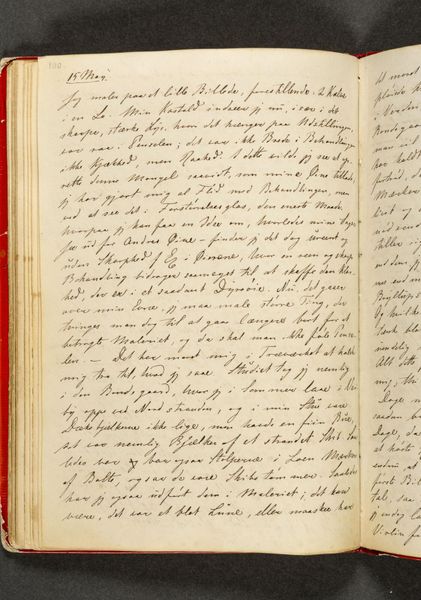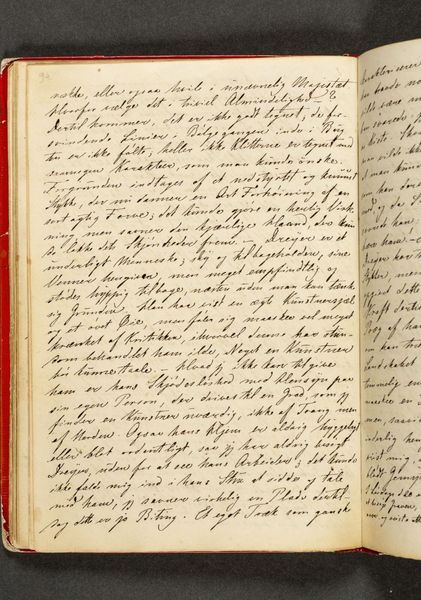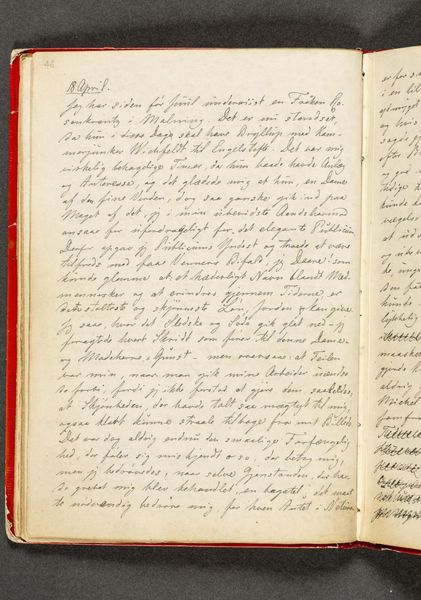
drawing, paper, ink
#
portrait
#
drawing
#
paper
#
ink
#
romanticism
#
genre-painting
Dimensions: 192 mm (height) x 133 mm (width) (bladmaal)
Editor: Here we have “Dagbog. Side 70” from 1844, a page from Johan Thomas Lundbye's diary, rendered in ink on paper. It feels very intimate, almost voyeuristic, to be looking at his private thoughts. What do you see in this piece, from your perspective? Curator: What strikes me immediately is the historical and social context. Lundbye, a figure of Danish Romanticism, lived in a period of intense national and cultural self-discovery. This diary page isn't just a personal reflection; it's a window into the intellectual ferment of his time, an era grappling with identity. Do you notice how the text seems almost performative, conscious of an audience even in its seeming intimacy? Editor: That's an interesting point! I hadn’t considered the performance aspect. I suppose diaries, even private ones, are always framed by an awareness of the self. Curator: Exactly. Think about the act of writing itself, the deliberate choices made in language, tone, and even penmanship. How does this influence our perception of Lundbye and his work? Consider how literacy rates at the time and the class associations with them shaped whose voices were recorded and amplified in art history. Whose stories are missing from this page, or from the art historical canon as a whole? Editor: That makes me think about whose voices and experiences are traditionally left out of these historical records. Thank you for pointing that out, there's far more at play here than initially meets the eye! Curator: It's precisely by engaging with these questions, by situating the artwork within broader intersectional narratives, that we can truly begin to understand its complexity and enduring relevance.
Comments
No comments
Be the first to comment and join the conversation on the ultimate creative platform.
